Bonsai cultivation is an ancient and revered plantation style requiring meticulous attention to detail. Among the many factors contributing to a healthy and thriving Bonsai, proper watering is undeniably one of the most critical. Yet, the question often arises: how frequently should we water Bonsai, or should its soil always be wet?
This article delves into the delicate balance between keeping your miniature masterpiece adequately hydrated and avoiding the pitfalls of overwatering. Understanding the intricacies of Bonsai watering is essential for nurturing these living works of art.
Decorative bonsai plants, such as the striking pink bonsai tree, not only add a splash of color to your space but also embody the meticulous care and tradition of bonsai cultivation.
This guide will delve into maintaining these living art pieces’ vibrant beauty and health.
Join us as we share the secrets to maintaining the perfect moisture level for your cherished Bonsai trees and creating the miniature forest of your dreams!
Understanding Bonsai Watering

Water is to Bonsai what lifeblood is to us! Properly understanding Bonsai watering is the foundation of successful Bonsai care. In this section, we delve deeper into the pivotal role of watering and explore the intricacies of moisture management for these miniature wonders!
Although smaller in size, Bonsai are living trees, and like their full-sized counterparts, they rely heavily on water for their survival and growth. Water serves as the medium for nutrients and nourishment a plant needs to survive and flourish. However, striking the right balance is key, as excess and deficiency can severely affect the plant’s health.
Overwatering can be a silent killer, suffocating your Bonsai’s roots by depriving them of essential oxygen. In contrast, underwatering can lead to drought stress, causing leaves to wither and growth to stop.
Signs of Overwatered Bonsai
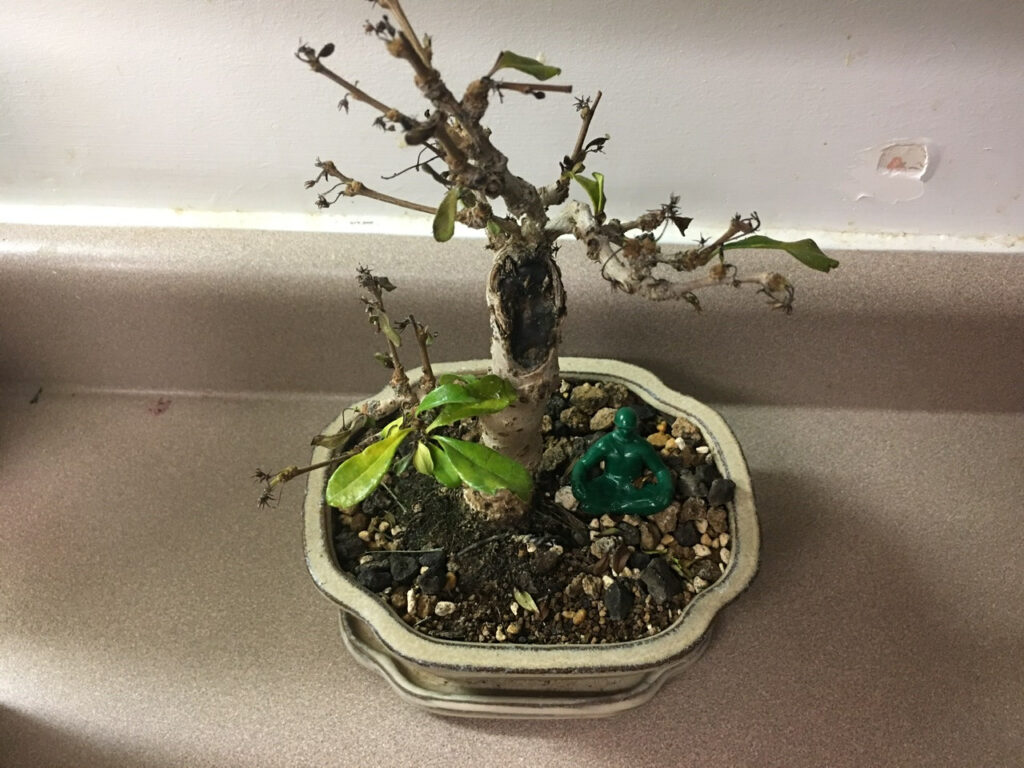
Overwatering is one of the most commonly faced issues in Bonsai care. Out of extra care for the plant, plant owners overwater it to prevent it from dying. However, that leads to detrimental effects on the plant.
Plant owners must recognize the signs of overwatering in a plant to prevent rotting and other excessive moisture-related problems. One of the most noticeable signs of an overwatered plant is wilted leaves. It may also result in leaves turning yellow or brown and falling off due to waterlogged roots.
Another clear sign is the presence of mold or algae on the soil’s surface. Excess moisture creates an ideal environment for these green guests to thrive and live off the plant’s nutrients. The soil also releases an unpleasant or musty odor due to overwatering.
It would be best to inspect Bonsai’s roots to determine its health. The healthy roots should be firm, white, and free from foul smells, while the roots of an overwatered Bonsai will be mushy and brown.
Signs of Underwatered Bonsai
Recognizing the signs of underwatering in your Bonsai is vital for maintaining its health and vitality. One of the primary signs of underwatering is dry and withered leaves. When a Bonsai doesn’t receive adequate water, its leaves can lose their vibrancy, become brittle, or curl inwards as a defense mechanism to minimize the water loss.
Additionally, the soil of an underwatered Bonsai pot may appear visibly dry and cracked. Underwatered bonsai is a common problem for busy people; however, in such cases, you should opt for low-maintenance bonsai.
Factors Affecting Bonsai Watering
There is no universal watering rule for the Bonsai trees. Numerous factors decide when and how you should water your Bonsai tree. Understanding these variables is key to maintaining the perfect moisture balance for your Bonsai:
- Different seasons and adjustments require changes in watering frequency, such as the plants needing the most water during summer.
- The material and size of your Bonsai pot affect water retention and, thus, change the plant’s watering needs. For instance, porous pots allow fast evaporation, requiring more frequent watering.
- Each species has unique watering needs. It is recommended to research Bonsai’s specific requirements and water needs before buying.
- The age of the Bonsai also affects its water requirement levels. Young Bonsai plants need more water than the old ones.
Watering Techniques of Bonsai
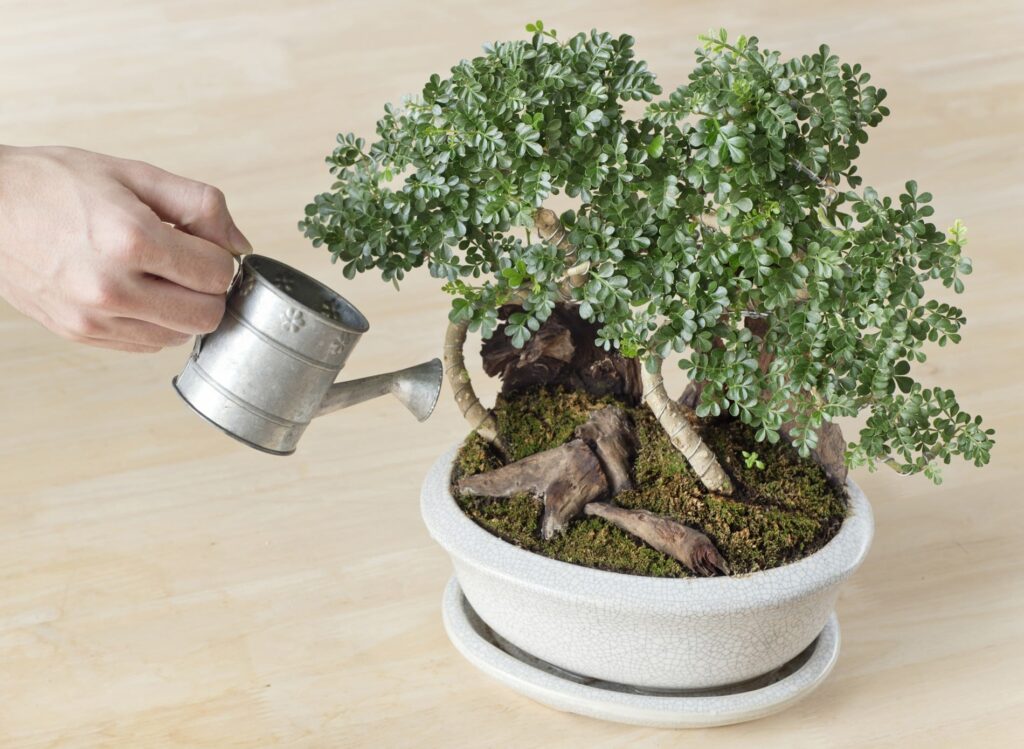
Here are some tips to water your Bonsai trees properly and ensure their well-being, longevity, and health:
- Assess the soil’s moisture before watering. Start by gently touching the soil; if it feels dry, know it’s time to water your plant!
- Water your plant thoroughly for the distribution of nutrients and the prevention of salt buildup.
- Choose the right watering tool that provides the plant with a gentle and even stream of water. Highly sharp water streams contribute to soil disturbance and compacting.
- Never let your Bonsai sit in standing water, and ensure proper drainage in your Bonsai container.
Conclusion
In conclusion, the art of Bonsai cultivation is a delicate task that hangs between providing adequate moisture and avoiding overwatering. It is essential to understand when and how to water the Bonsai for its health and vitality. Even though Bonsai trees are small, they are living organisms with unique needs based on their surrounding atmosphere.
By understanding the signs of underwatering and overwatering and implementing proper watering techniques and schedules, you can create the perfect environment for your Bonsai tree to grow and thrive. Remember, there is no one-size-fits-all approach to Bonsai watering.
It requires careful observation, adaptation, and a genuine connection with your miniature trees and mother nature. So, the next time you water your Bonsai, do it with a deeper appreciation for nature’s magic and power!

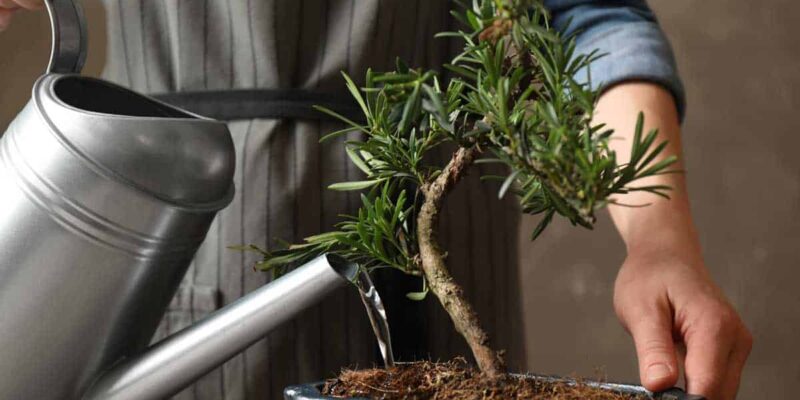


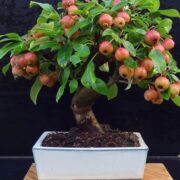
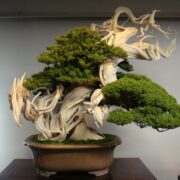

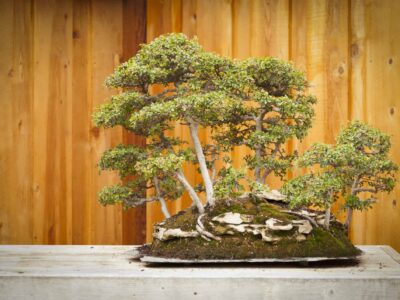

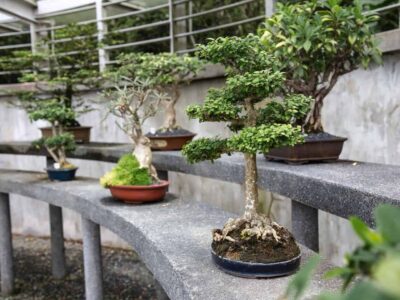
Comments